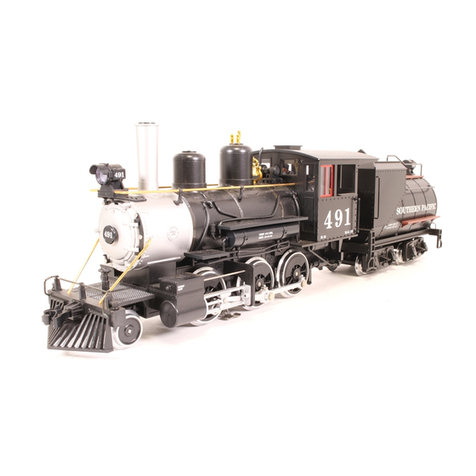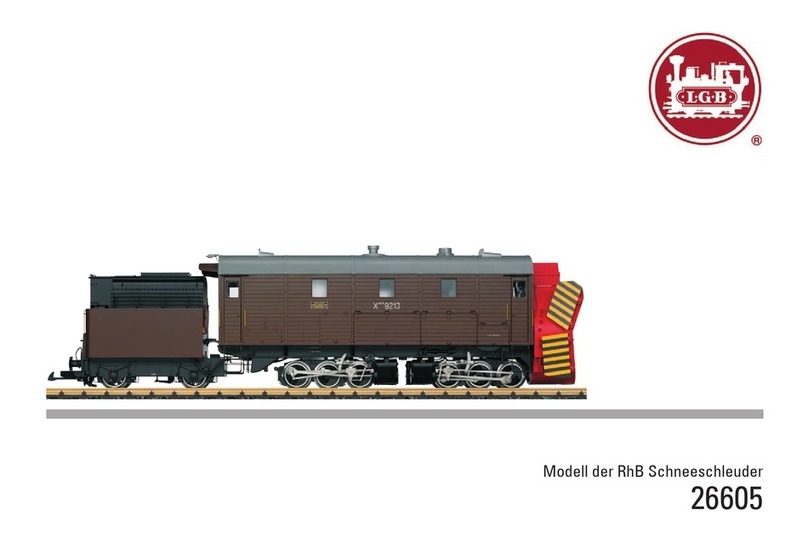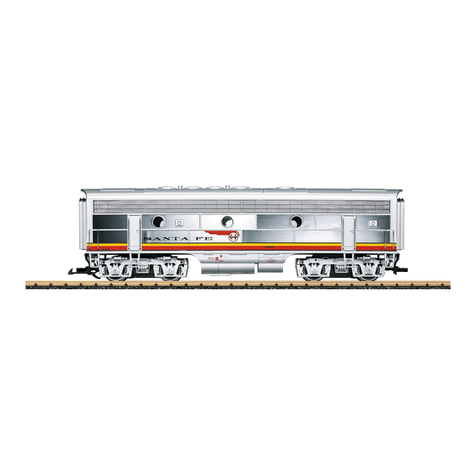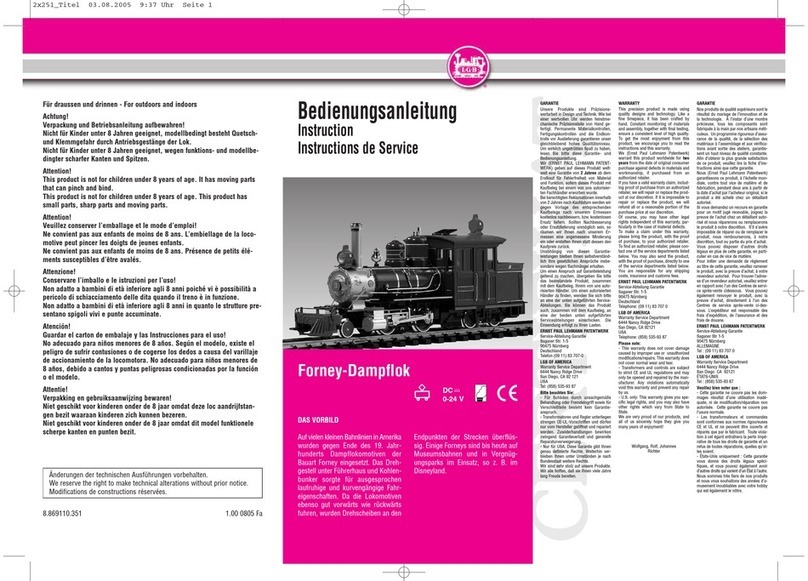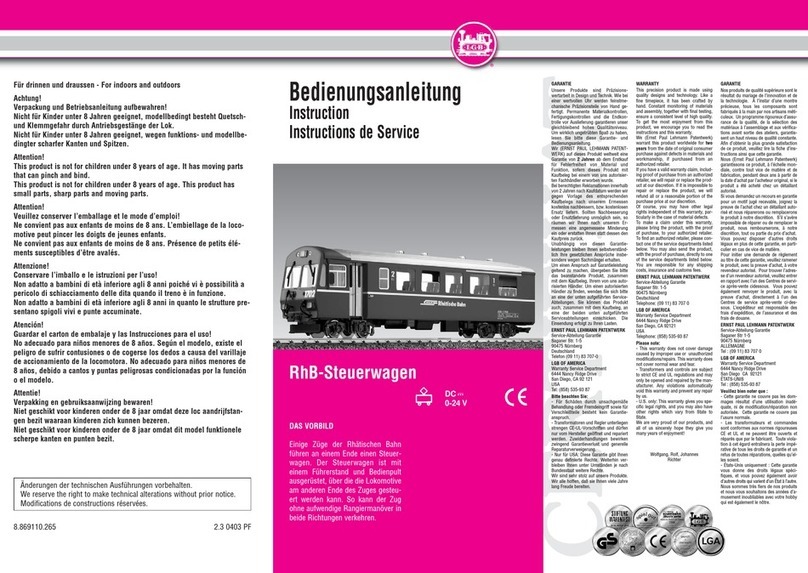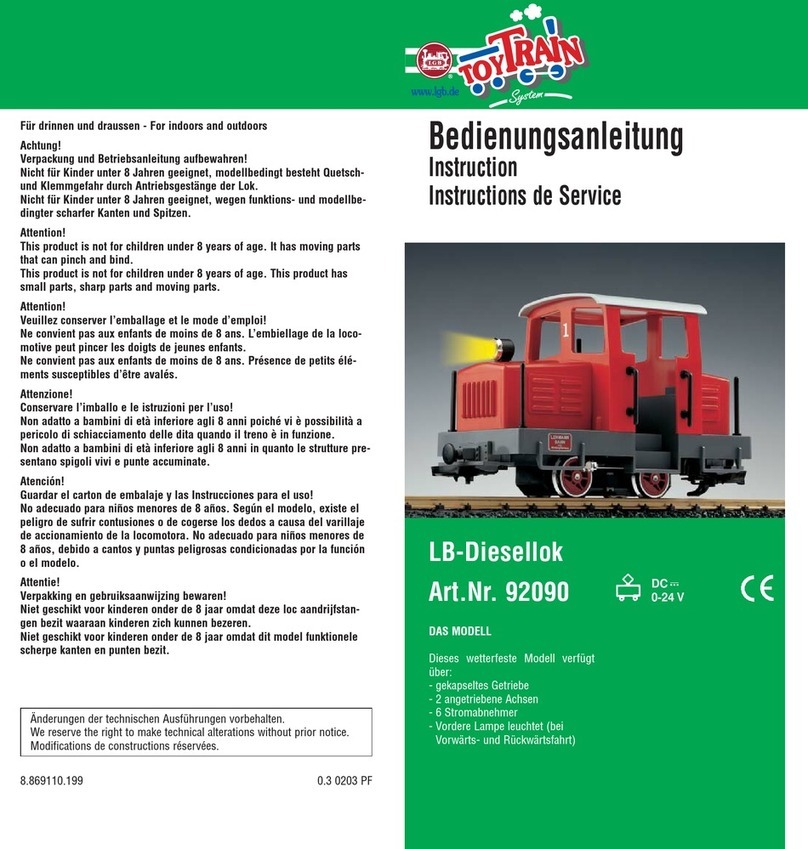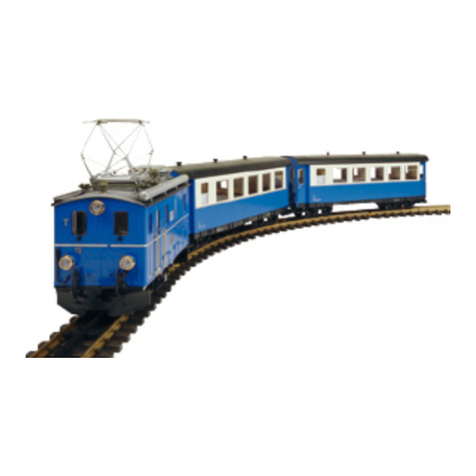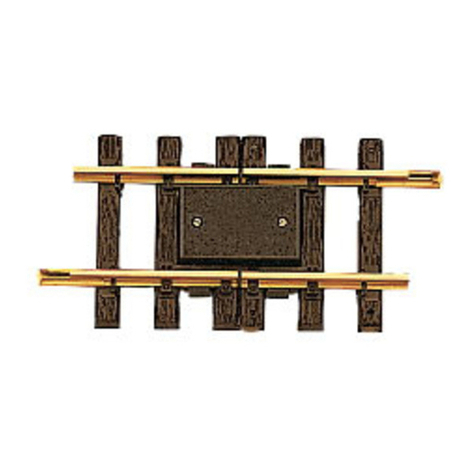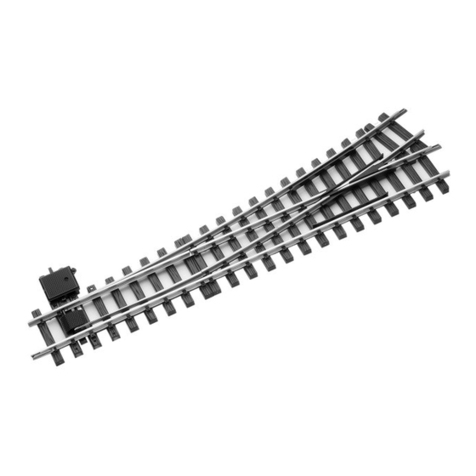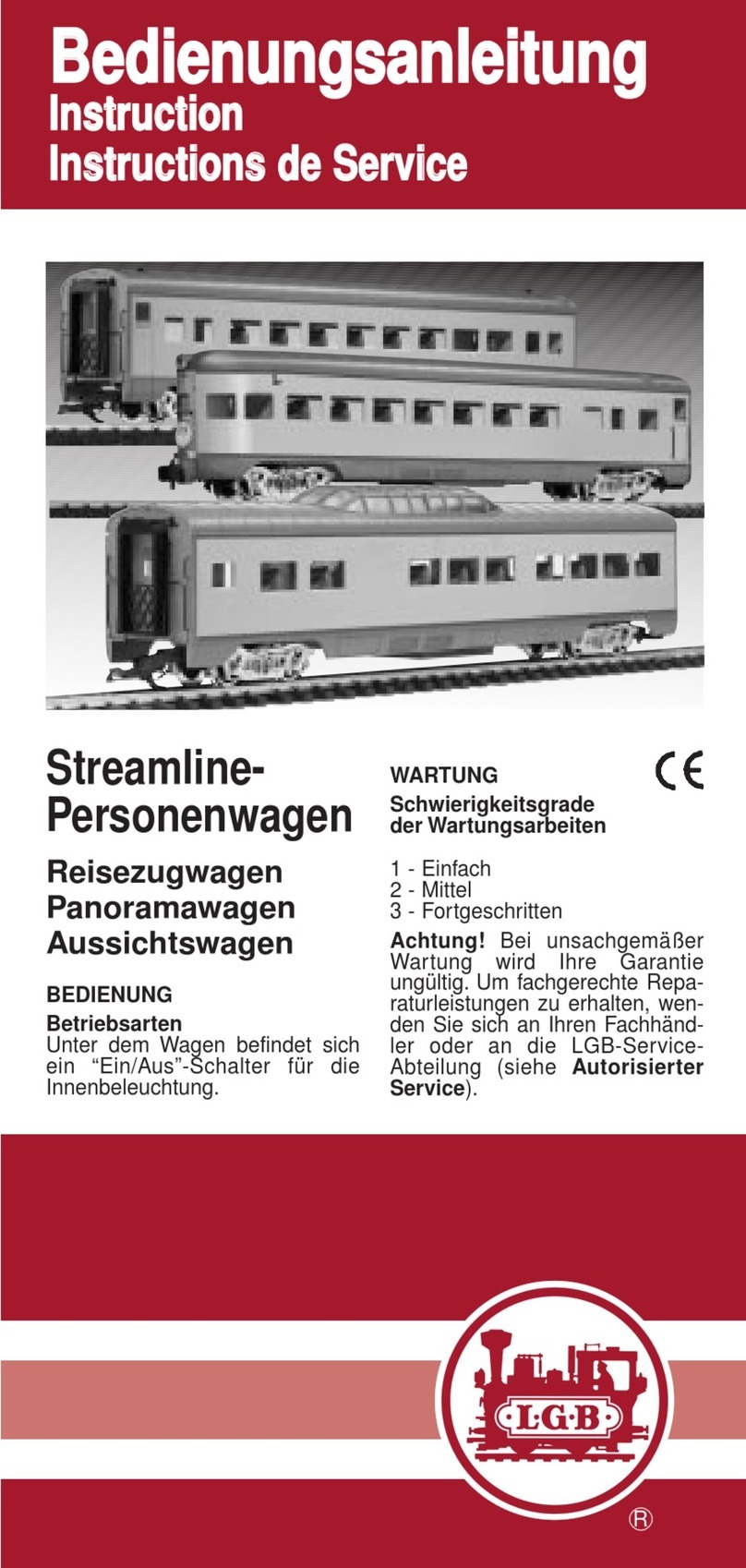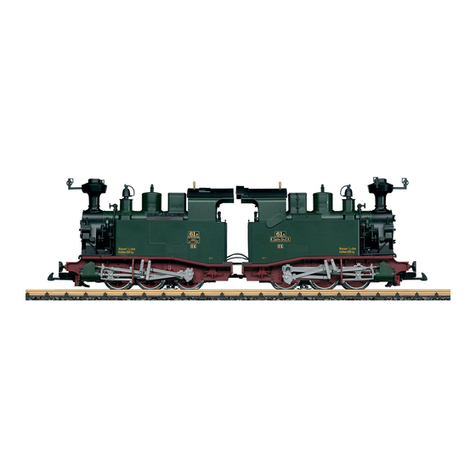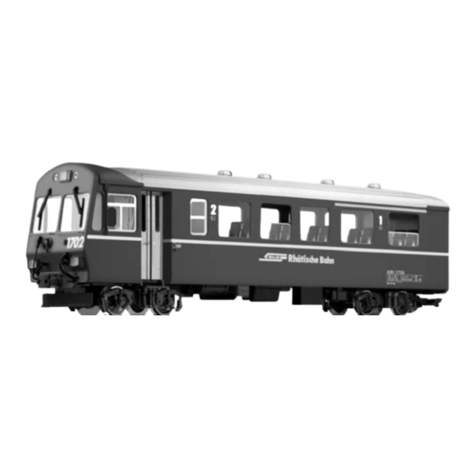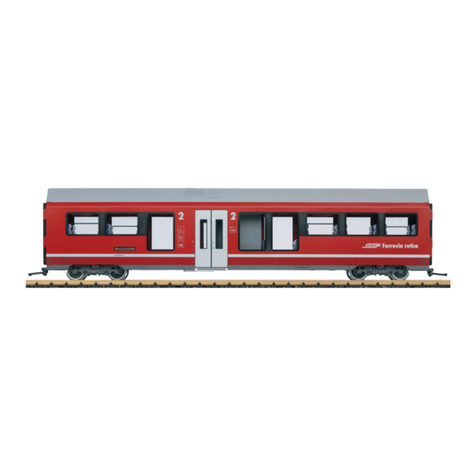
10
Safety Notes
• This model may only be used with the operating system designed for it.
• Use only switched mode power supply units and transformers that are designed
for your local power system.
• This locomotive must never be supplied with power from more than one power pack.
• Pay close attention to the safety notes in the instructions for your operating system.
• Not for children under the age of 15.
• WARNING! Sharp edges and points required for operation.
• WARNING! This product contains magnets. Swallowing more than one magnet may
cause death in certain circumstances. If necessary, see a doctor immediately.
Important Notes
• The operating instructions are a component part of the product and must therefore
be kept in a safe place as well as included with the product, if the latter is given to
someone else.
• The warranty card included with this product specifies the warranty conditions.
• Please see your authorized LGB dealer for repairs or spare parts.
• Disposing: www.maerklin.com/en/imprint.html
General Note to Avoid Electromagnetic Interference: A permanent, flawless wheel-
rail contact is required in order to guarantee operation for which a model is designed.
Do not make any changes to current-conducting parts.
This specially prepared model is an exclusive version, which reproduces the conditi-
on of the original after many years of operation in wind and weather.
This special series was only produced in a small quantity. The artificial weathering
was separately applied with careful hand work by experienced artisans. Despite a
final fixing of the colors with varnish, this additional application of color does not form
a homogeneous, hard coating.
Therefore, please handle the model with special care and avoid, scratching, rubbing,
or wiping the surface and the details. Please do not use liquid cleaners or cleaning
solutions.
Please note that the spare parts for this model weathered at the factory are only
available in non-weathered version.
Functions
• This model is designed for operation on LGB two-rail DC systems with conventio-
nal LGB DC train controllers or power packs (DC, 0 - 24 volts).
• Factory-installed multiple protocol decoder (DC, DCC, mfx).
•
The model is programmed with locomotive address 03 for use with the LGB Multi
Train System (DCC). The locomotive is automatically recognized in operation with mfx.
• Mfx technology for the Mobile Station/Central Station.
Name set at the factory: SP 8448
• Volume can be changed for the sound effects
• The operating sounds are on in analog operation.
• The functions can be activated only in parallel. Serial activation of the functions is
not possible (Please note here the instructions for your controller).
• When possible, use the larger “R3“ and “R5“ curves in order to increase the
operating reliability and allow prototypical operation.
• The engineer‘s cab will swing out quite a bit when the locomotive is negotiating
curves. For that reason check the clearance gauge of your layout before you run
this model.
• A straight section of track should always be installed before bridges, station plat-
forms, or tunnels so that the locomotive can straighten itself before passing these
obstacles.
Mode of Operation Switch
This locomotive has a 4-position mode of operation switch (Figure 1 & 2).
Pos. 0 Locomotive stored on a siding without current
Pos. 1 Locomotive motor, lighting, and sound turned on
Pos. 2 Same as Position 1
Pos. 3 Same as Position 1
Sound
This locomotive has a volume controller. The volume controller is located next to the
mode of operation switch (Figure 1).
The bell and horn can be activated with the LGB sound activation magnet (17050) in-
cluded with the locomotive. The activation magnet can be clipped into place between
the ties of most LGB track sections.
The magnet is positioned to the side under the LGB logo cast into the plastic cover.
Place the magnet on one side to activate the horn when the locomotive passes over
this spot. The bell will sound when the magnet is placed on the other side.






